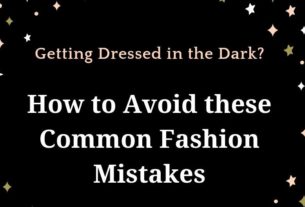Check any clothing label and it must include fabric content. Often expressed in a percentage, it is common to see more than one fabric type listed.
Here is a quick breakdown of Natural fibers, synthetics, and semi-synthetic textiles.
Natural Fibers
- Cotton is the most widely used natural fiber for clothing. Common in knits, denim, chambray, seersucker, and twill. Prone to some shrinking in the wash, and wrinkles. Polished cotton fabric has the slight shine. Natural, breathable fabric.

Cotton in the raw - Silk is a natural fiber produced from silkworms originally produced for Chinese Kings, and is still considered a luxury item. Silk is very delicate and is prone to damage when wet or left in direct sunlight. Even dry-cleaning can shrink silk chiffon, so delicate hand washing really is best. Silk and static cling go hand in hand, try a few drops of fabric softener when hand washing or lightly spray diluted fabric softener on the inside of silk dresses & skirts.
- Linen is made from the spun fibers of the stem of the flax plant, also known as linseed. It is a strong, flexible natural fiber that is stronger than cotton. Lace, yarn, robe, books, tea bags and many currency banknotes are made from linen due to the strength of the fiber. Damasks and canvas are the heavier weight flax-linen fabrics. Linen is a great natural fiber for heat or cold. Linen will have a slightly wrinkled look after washing and will naturally soften over time.
- Wool is textile fiber from animals, specifically sheep. Also in this family is cashmere and mohair from goats, and angora from rabbits. Wool is not hair or fur, but rather staples which is a fancy way to describe the way sheep, camels, goats, and rabbits hair clumps. Wool is resistant to static electricity, easily absorbs water, and is a great insulator (used to keep you warm, and to keep the heat out).
- Alpaca is the hypoallergenic hair or fleece fibers from the small llama-like creature, closely related to a came. The hair is sheered annually, not harming the animal. The hair is spun into yarn, thread, and fabric that is lighter weight than wool, but certainly less common and usually more expensive.
- Other natural fibers include Bamboo (made from the tall bamboo plant), beech (from the beech tree), hemp fiber (from the cannabis plant). When specifically labeled as the natural fiber it retains all of the naturally cooling properties during the manufacturing process.
Synthetic
-
- Polyester, Nylon, Spandex, Viscose, Modal, and Rayon are all types of synthetic materials that can be used as knits, imitation silks, and more. Synthetics are more durable and stain resistant than the natural counterparts, but are prone to heat damage and are not as bio-degradable as natural fibers.
Semi-Synthetic
- Rayon goes by many names, such as viscose rayon, modal, tencel. It is semi-synthetic, meaning that it started from various sources of wood, plant, and natural fibers then heavily processed during the manufacturing process. Rayon holds color beautifully and is ideal for warm climates as it naturally keeps you cool. Clothing made with 50% rayon or more should be dry-cleaned, but can be spot treated. Both modal rayon and beech fabrics start from the Beech tree (natural fabric), then modal undergoes chemical processing. The modal rayon will feel smooth almost slippery compared to the natural chemical-free beech fiber.




I’ve been exploring for a little for any high-quality articles or weblog posts in this kind of area . Exploring in Yahoo I ultimately stumbled upon this website. Reading this information So i’m satisfied to show that I’ve an incredibly just right uncanny feeling I discovered just what I needed. I most for sure will make sure to don’t fail to remember this website and give it a look on a continuing basis.
I love learning new interesting facts!
Thanks for explaining all this. It really shows you why certain materials cost more than others.
I am so glad it is helpful!
This is really interesting and now I know my cotton shirts really ARE shrinking, not my waist expanding haha! I’ll leave them out of the tumble dryer from now on!
Low heat, or just finish those cotton shirts in the dryer will also help to reduce shrinking. Here is a helpful post to “unshrink” those cotton shirts – http://2morrowsdress.com/2014/03/oops-i-shrunk-it-again/